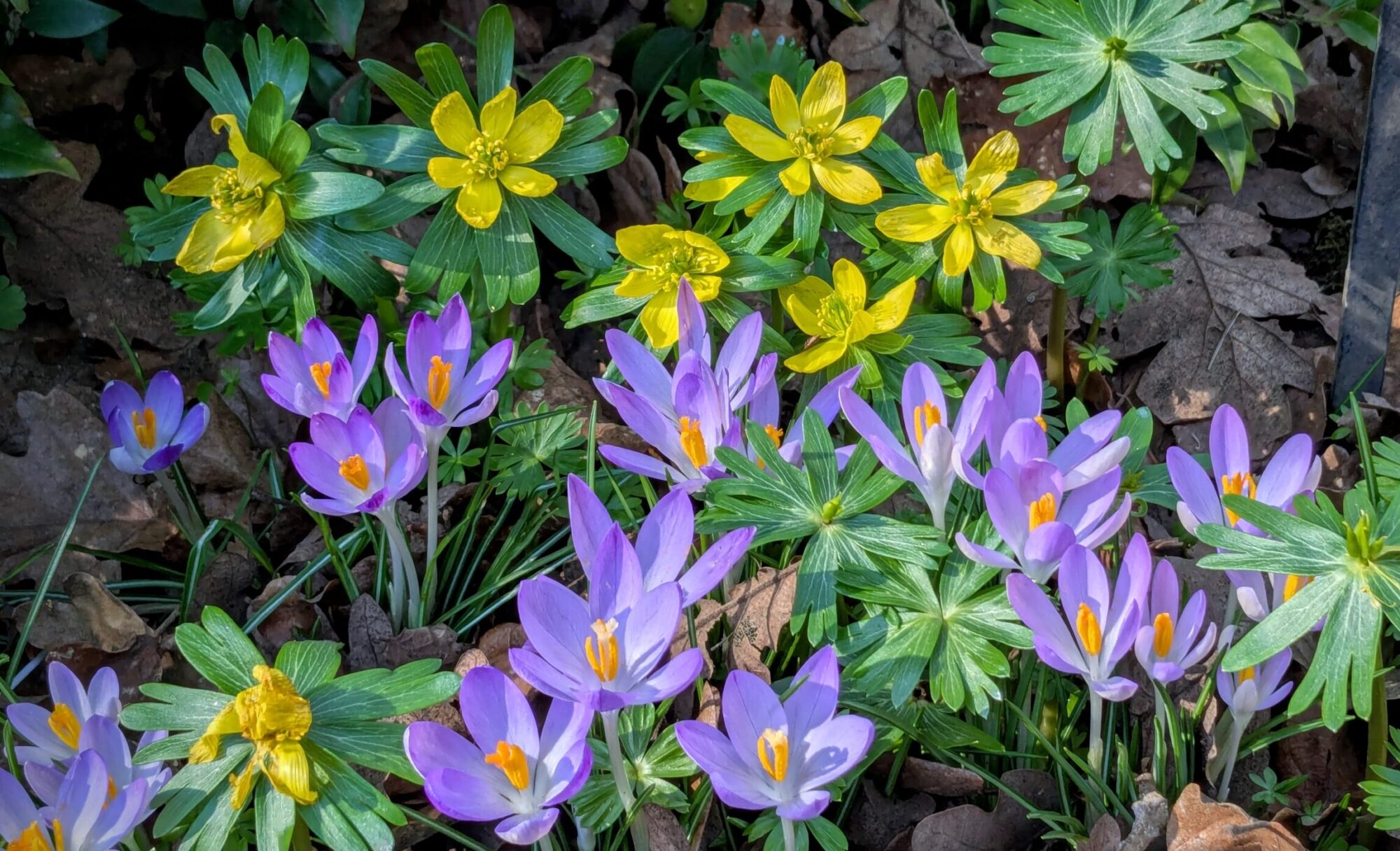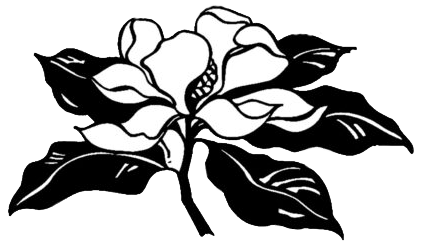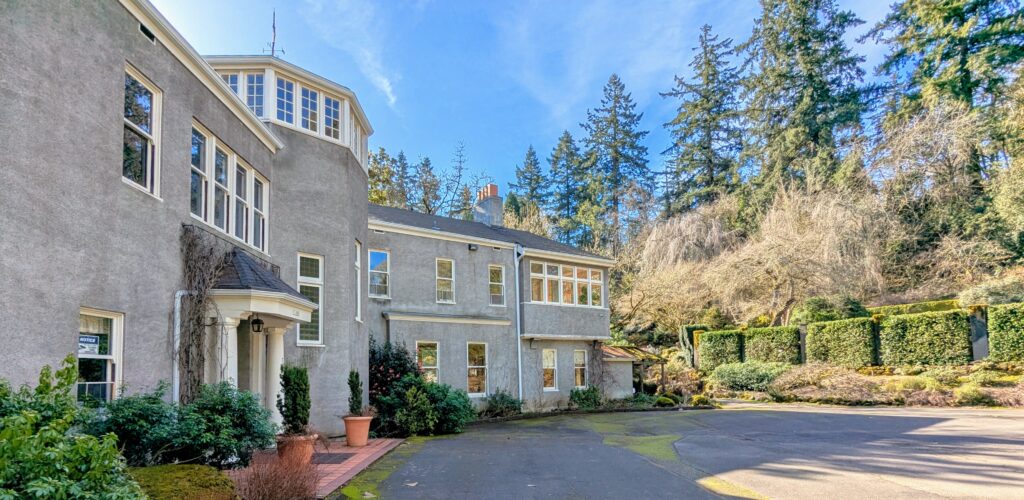
Situated atop the cliffs overlooking the Willamette River in Portland’s Dunthorpe neighborhood, the Elk Rock Garden estate was created by Scottish immigrant and entrepreneur Peter Kerr, and is among the oldest and largest intact private gardens in Oregon.
Shortly after arriving in Oregon in 1888, Kerr launched a successful grain business, and in the early 1890s, used profits from that business to purchase a modest parcel of land. By adding three adjacent lots over the next five years, he increased the site’s total size to over thirteen acres. (Today, it is closer to 10 acres.)
In December 1909, Kerr hired landscape architect John Charles Olmsted, who offered feedback on the burgeoning garden, and suggested siting for a new main residence that would optimize views of Mount Hood. The previous residence was known as Cliff Cottage (shown below in the background as the foundation for the new residence was being excavated.)
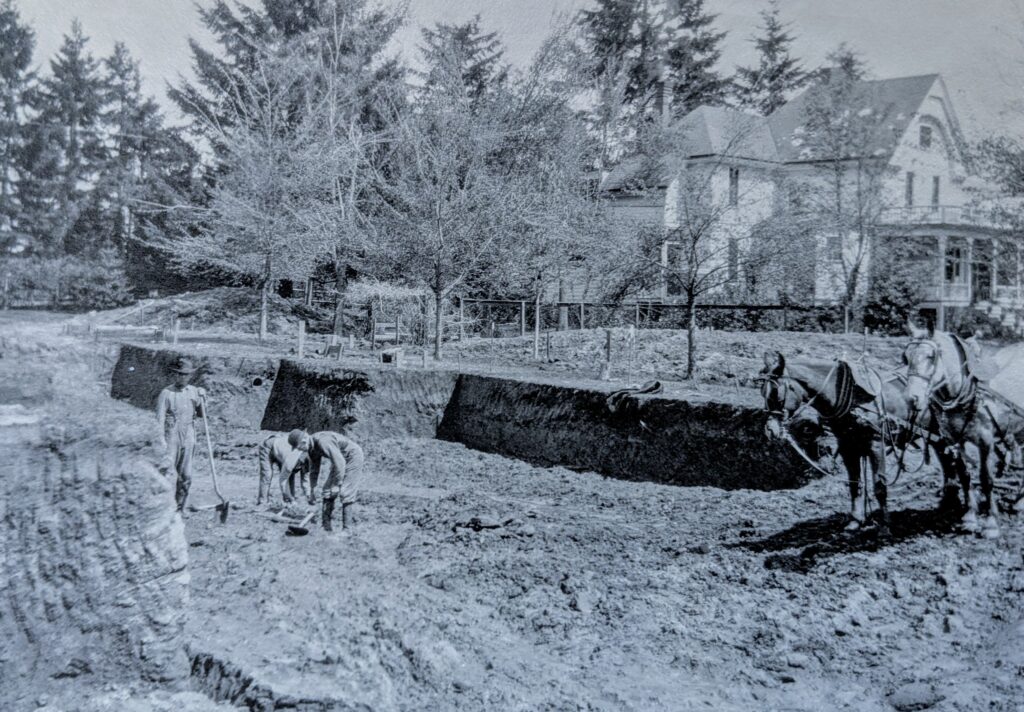
Ellis F. Lawrence (the founding dean of the Architecture program at the University of Oregon), and his business partner William Holford, were asked to design the new residence.
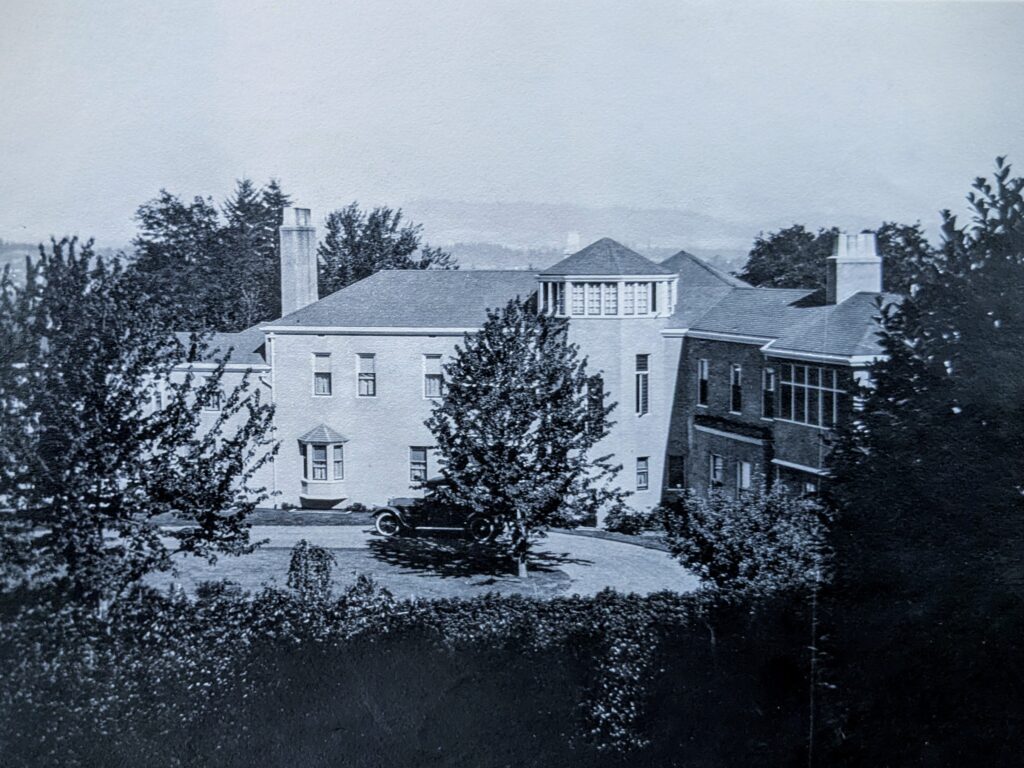
Once construction of the newresidence was completed, Kerr (an avid, lifelong gardener) began implementing plans for a sprawling, picturesque-style garden, utilizing intertwining paths and streams to portray a wild, albeit highly manicured and idealized, version of the natural landscape.
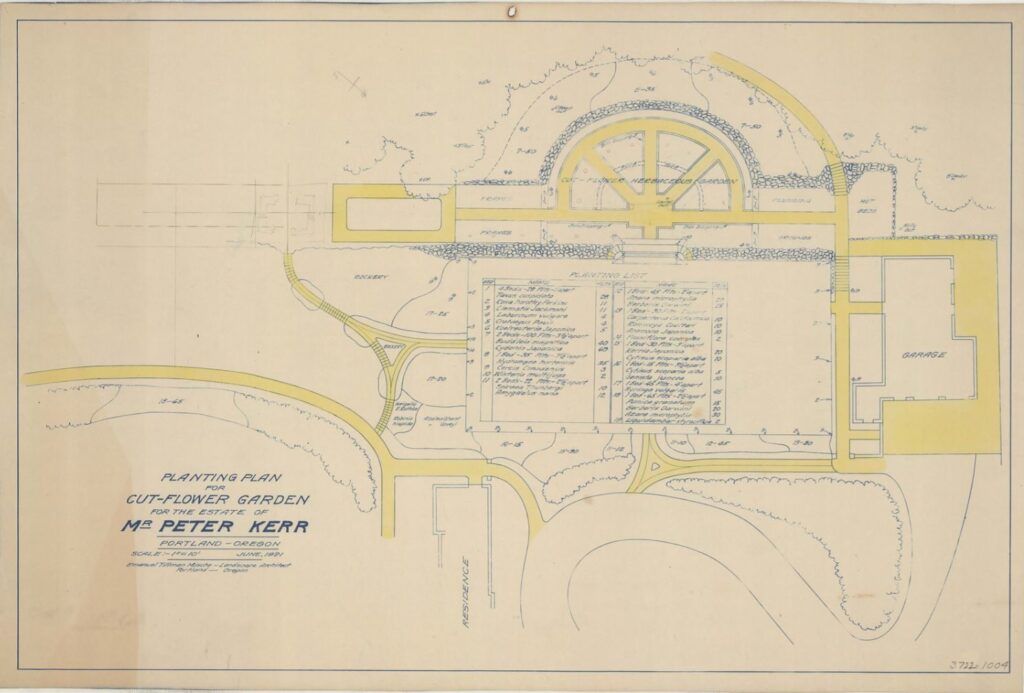
In 1917, Kerr hired Emanuel Mische, a former Olmsted firm plantsman and later superintendent of Portland’s public park system to advise on a planting plan. Kerr followed some of his suggestions, but also followed his own gardening instincts.
While Olmsted’s association with the garden’s design ended in 1919, Kerr spent another thirty-eight years meticulously planning and maintaining the garden, ultimately planting an eclectic mixture of Scottish species and Pacific Northwest natives. Much of that landscape that survives today, with the expansive lawns adjacent to the house, and winding pathways that pass through wooded areas and provide one-of-a-kind views of the Willamette River, Mt. Hood and Elk Rock Island.
In 1957, when Mr. Kerr died at the age of ninety-five, the house and garden were donated by his daughters, Anne McDonald and Jane Platt, to the Episcopal Diocese of Oregon, along with an endowment for the care and maintenance of the garden, with the stipulation that the garden be opened to visitors.
In 1994, the Elk Rock Garden Foundation and the Friends of Elk Rock Garden were formed to protect, preserve and perpetuate this wonderful garden. When in 2022, the Diocese decided to sell the property, descendants of Peter Kerr assisted the Elk Rock Garden foundation in repurchasing the property, allowing the garden to continue to remain open to the public.
The Elk Rock Garden residence is now being used as office and meeting space for mission-aligned nonprofit organizations, including the Elk Rock Garden Foundation and the Hardy Plant Society of Oregon (HPSO).
You can learn more about the mission of the Elk Rock Foundation here.
Sources: Oregon Encyclopedia and The Cultural Landscape Foundation
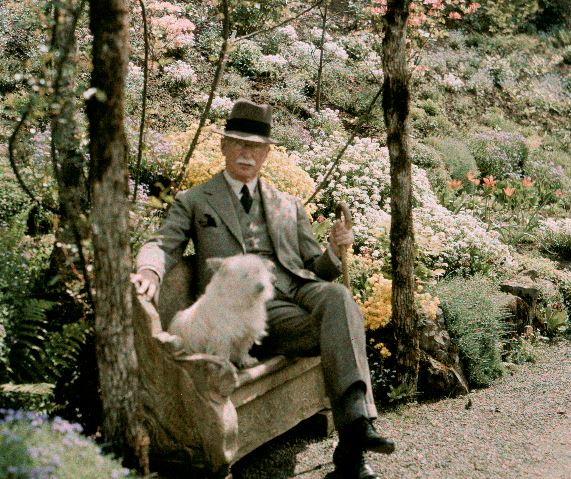
Historic photos courtesy of the Kerr Family. Kerr property planting plan image courtesy of the National Park Service, Frederick Law Olmsted National Historic Site.
Pictured from the top of the page: the Elk Rock Garden manor house – current day, Cliff Cottage during construction of the Elk Rock Garden manor house, the manor house in the 1920s, an Olmsted planting plan for Elk Rock Garden, and Peter Kerr (seated) alongside his dog, Cree.
